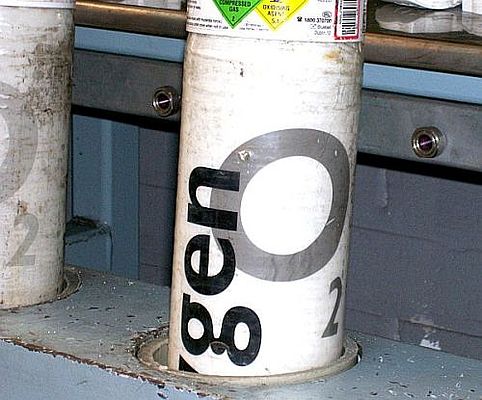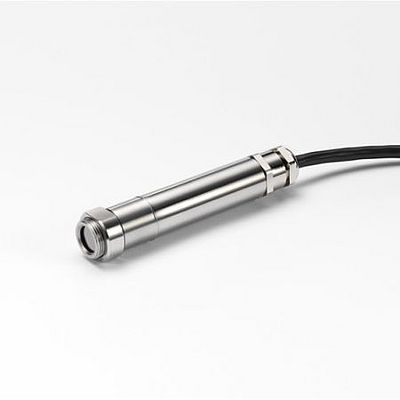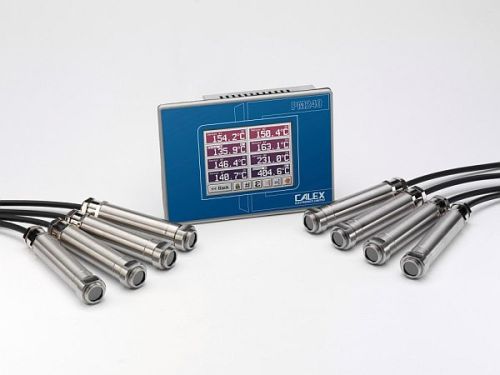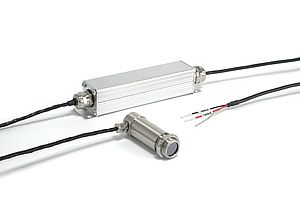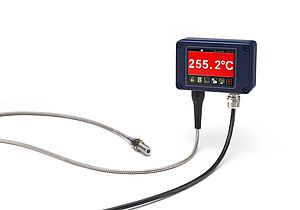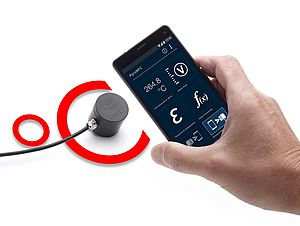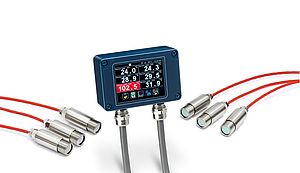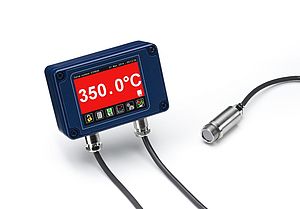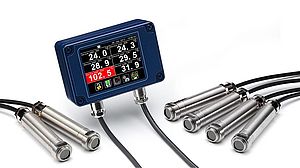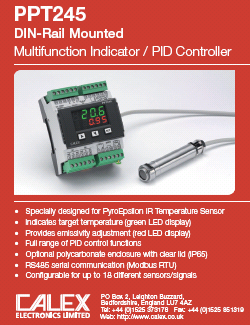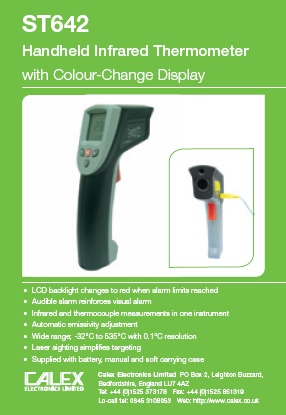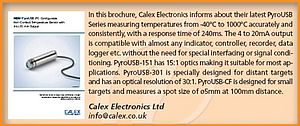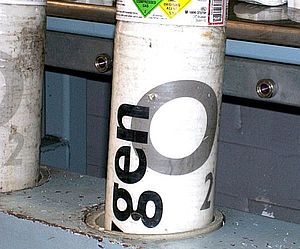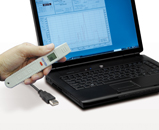Infrared temperature sensors from Calex Electronics have been used with success for over 7 years by a leading provider of packaged gas for measuring the temperature of gas cylinders as they are filled. When a gas cylinder is filled and the pressure increases, the cylinder will warm up.
The temperature of the surface is monitored for several reasons:
• The target pressure is compensated so the amount of gas filled is corrected at a standard temperature, typically 15ºC.
• The temperature is monitored as the cylinder valves are opened. If the valve is opened correctly a drop in pressure and therefore temperature is observed before rising again as the cylinder is filled. If the temperature drop is not detected then filling is stopped as there could be a problem in opening the valve.
• If multiple cylinders are filled simultaneously, the highest and lowest filling temperatures of the batch are monitored and if the difference between these two temperatures is too great, filling can be stopped.
One PC151MT-0 sensor is aimed at the side of each gas cylinder.
The customer previously used magnetic probes to measure steel cylinder temperatures, however problems were encountered when non-magnetic aluminium alloy and composite wrapped cylinders were used. Infrared temperature measurement was investigated and found to be successful due to the sensor's fast response time (240 ms), 4-20 mA output for connection to analogue inputs on the customer's PLC, and ability to measure the temperature of the surface of wrapped cylinders through the plastic wrapping.
The cylinders are painted and sometimes icy, so satisfactory results can be obtained with the low-cost, fixed-emissivity PyroCouple series of sensors, which has a linear analogue output. For larger quantities of cylinders, PyroBus sensors with RS485 Modbus output can be networked in a daisy-chain for direct connection to digital instrumentation.
Application Tips
An emissivity setting of 0.95 should give good results due to the high emissivity of painted cylinders. Some plastic wrapping materials are transmissive to infrared at 8-14 microns so the sensor will effectively see through them. For these reasons, the same sensor can be used for painted steel, painted aluminium alloy and composite fibre-wrapped cylinders. The measured spot size should be no more than half the diameter of the cylinder. A sensor with 15:1 optics positioned at a distance of 200 mm will measure a spot of diameter 25 mm (approx). Handheld infrared temperature sensors can also be used to determine temperature gradients over the height of the cylinder.


